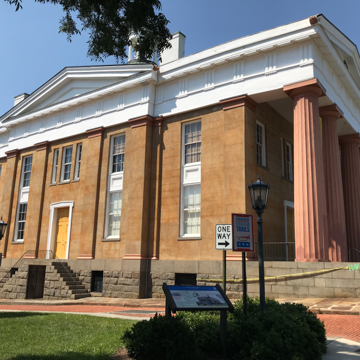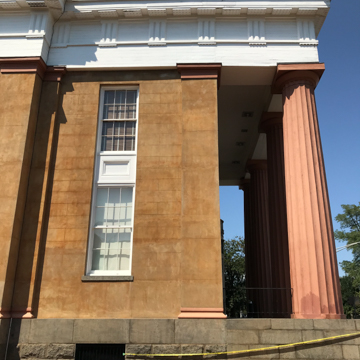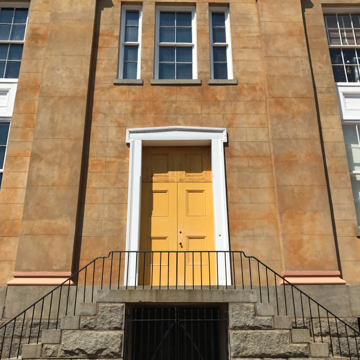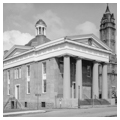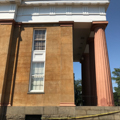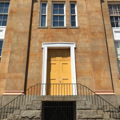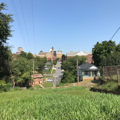You are here
Lynchburg Museum (City CourtHouse)
A major example of eclectic Greek Revival architecture in the Piedmont, this building reflects Lynchburg's heady antebellum prosperity. In 1853 the city council, after soliciting proposals for a new courthouse, selected plans presented by Ellison, a native of Providence, Rhode Island, then in Lynchburg as a civil engineer with the Virginia and Tennessee Railroad. Ellison copied details from the Parthenon, more than likely relying on such sources as Minard Lafever's The Modern Builder's Guide (1833). He added his own suave touches, including a Roman dome capped with an open, Ionic cupola. The dome provides a handsome cap, while the cupola houses the town bell. Ellison's engineering training stood him in good stead when the council belatedly directed him to accommodate the town clock in his design, after he had prepared the drawings. He made the two center columns of the portico hollow to accommodate the weights and chains and installed the face in the tympanum of the pediment. The stuccoed brick walls are scored and “colored to imitate yellow sandstone.” The courthouse now serves as headquarters of the Lynchburg Museum System, housing permanent and temporary exhibits in addition to offices. With Monument Terrace as its propylaeum, Lynchburg's City Court House crowns its acropolis as fittingly as a building based on the Parthenon should.
Writing Credits
If SAH Archipedia has been useful to you, please consider supporting it.
SAH Archipedia tells the story of the United States through its buildings, landscapes, and cities. This freely available resource empowers the public with authoritative knowledge that deepens their understanding and appreciation of the built environment. But the Society of Architectural Historians, which created SAH Archipedia with University of Virginia Press, needs your support to maintain the high-caliber research, writing, photography, cartography, editing, design, and programming that make SAH Archipedia a trusted online resource available to all who value the history of place, heritage tourism, and learning.


